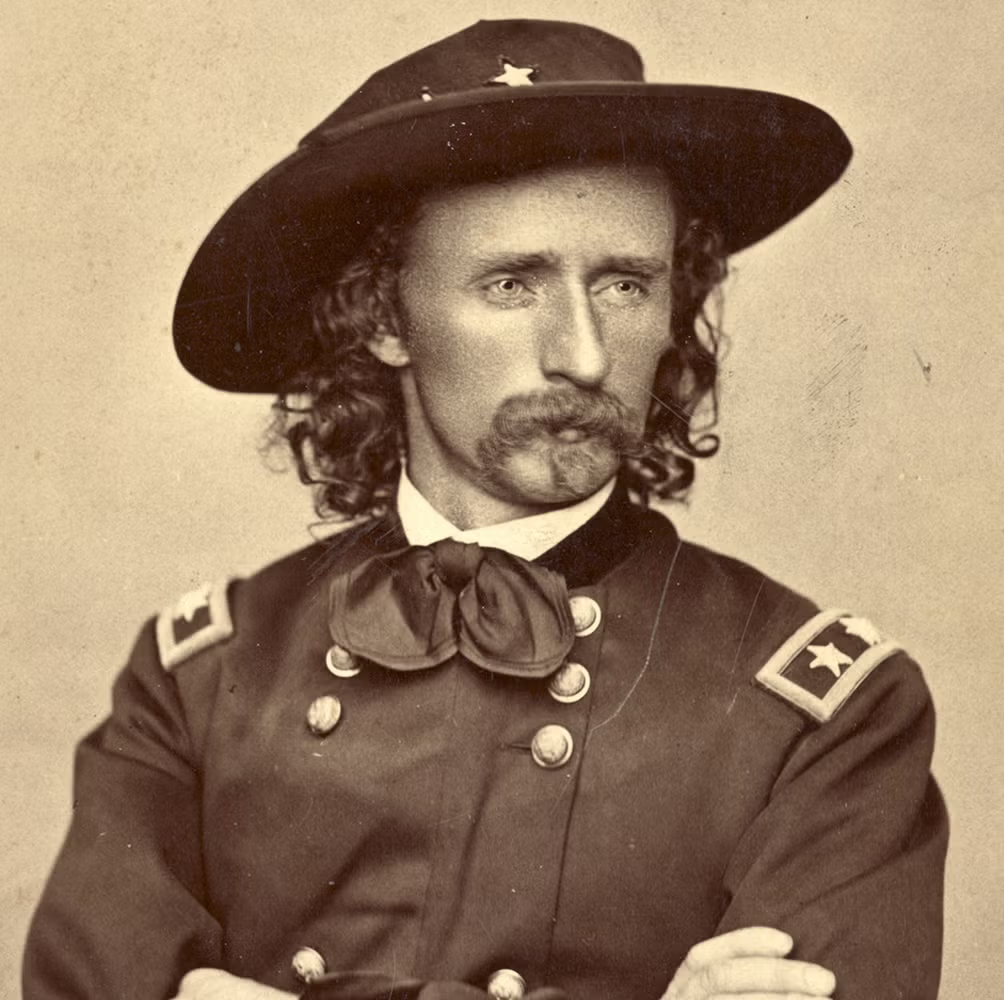
Table of Contents
Who Was George Custer?
George Armstrong Custer was a U.S. Army officer renowned for his role in the Civil War and his controversial demise at the Battle of Little Bighorn. Throughout the Civil War, Custer earned recognition for his valor, commanding cavalry units in key battles. In 1866, he joined the 7th Cavalry, and on June 25, 1876, he led 210 men into battle against Lakota and Cheyenne forces at Little Bighorn, where he and his entire command were killed in one of the most infamous military defeats in American history.
Early Life and Education
Born on December 5, 1839, in New Rumley, Ohio, George Armstrong Custer was the youngest of five children. He spent much of his early life moving between Ohio and Monroe, Michigan, where he lived with an older half-sister and her husband. After completing high school, Custer attended McNeely Normal School, supporting himself with various jobs while earning a teaching certificate. However, Custer aspired to more than a career in education. His ambitions led him to apply to the U.S. Military Academy at West Point.
Despite lacking the academic credentials of many other candidates, Custer’s determination and self-confidence won the favor of a local congressman, who recommended him for admission. In 1857, Custer was accepted into West Point. However, his time at the academy was challenging. Known for his rebellious nature, he struggled academically and was frequently disciplined for misbehavior. His performance was so poor that he graduated last in his class in June 1861.
Custer’s troubles continued shortly after graduation when he failed to prevent a fight between two cadets, nearly leading to his court-martial. However, with the outbreak of the Civil War, the army’s urgent need for officers spared him from punishment, and Custer’s military career took off despite his lackluster academic record.
Military Career
Custer’s military career began when he was appointed second lieutenant and assigned to command a cavalry unit. His strategic acumen became evident during the First Battle of Bull Run in July 1861, where he gained early recognition for his leadership. Custer was also noted for his uncanny ability to avoid injury, which he famously referred to as “Custer’s luck.” However, the soldiers under his command were not as fortunate, suffering disproportionately high casualties during the war.
Though a previously unremarkable student, Custer’s actions at Bull Run and subsequent battles drew the attention of senior officers, earning him a position on General George B. McClellan’s staff. His growing prominence led to his promotion to brigadier general in 1863.
The Boy General
As the commander of the Michigan Cavalry Brigade, Custer further solidified his reputation through pivotal engagements at Gettysburg and Yellow Tavern. His youthfulness, combined with his military achievements, earned him the nickname “Boy General.” The New York Tribune lauded his qualities, describing him as possessing all the traits of a classic hero.
By the war’s conclusion, Custer had risen to the rank of major general, and his cavalry units played a vital role in blocking the retreat of Confederate General Robert E. Lee’s forces, which ultimately contributed to Lee’s surrender at Appomattox on April 9, 1865. In recognition of his contributions, Lieutenant General Philip Sheridan presented Custer with the table used to sign the peace terms, along with a note praising his heroism. Sheridan wrote to Custer’s wife, Libbie, remarking that her husband was one of the most instrumental figures in achieving the war’s desirable outcome.
Battle of Little Bighorn
In the years following the Civil War, as the U.S. sought to tame the frontier, Custer was assigned to lead the newly formed 7th Cavalry against Native American tribes, including the Lakota Sioux and Southern Cheyenne. After a brief suspension for abandoning his post in 1867, Custer resumed his military duties and engaged in several skirmishes with Native American groups.
However, his boldness in battle led to his tragic downfall at the Battle of Little Bighorn in 1876. A coordinated attack was planned to subdue the Lakota and Cheyenne, with Custer leading one of three divisions. The attack was intended to encircle the Native American forces, but Custer’s impatience led him to move ahead of the others. On June 25, he ordered his 210 men to engage a large Native American village, unknowingly walking into a trap.
Facing thousands of warriors led by Sitting Bull, the revered Lakota chief who had initially sought peace, Custer and his forces were surrounded, outnumbered, and ultimately defeated. The Battle of Little Bighorn, often referred to as “Custer’s Last Stand,” marked a significant defeat for the U.S. military and a powerful moment in Native American resistance.
Custer’s Last Stand and Legacy
The aftermath of the Battle of Little Bighorn was a major embarrassment for the U.S. government, which quickly retaliated and crushed the Lakota. Custer’s role in the debacle cemented his place in American history, albeit for reasons he likely never intended. His wife, Libbie, later wrote about his life, attempting to frame him as a heroic figure, but the catastrophic defeat at Little Bighorn overshadowed these efforts.
In 2018, Heritage Auctions sold a lock of Custer’s hair for $12,500, which was reportedly preserved after a trip to the barber when Custer saved the cut hair in case he required a wig. This sale, though, symbolized a peculiar piece of history, as Custer’s legacy remains inextricably tied to the tragic events of his final battle.
